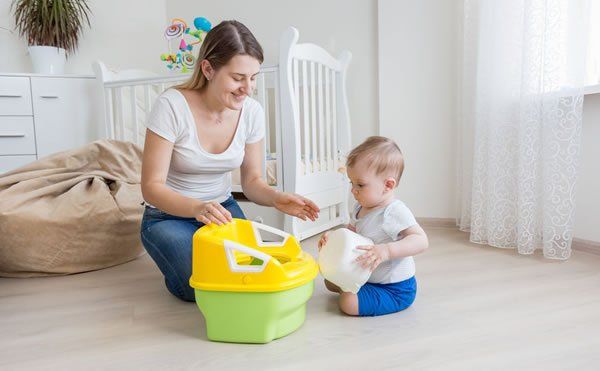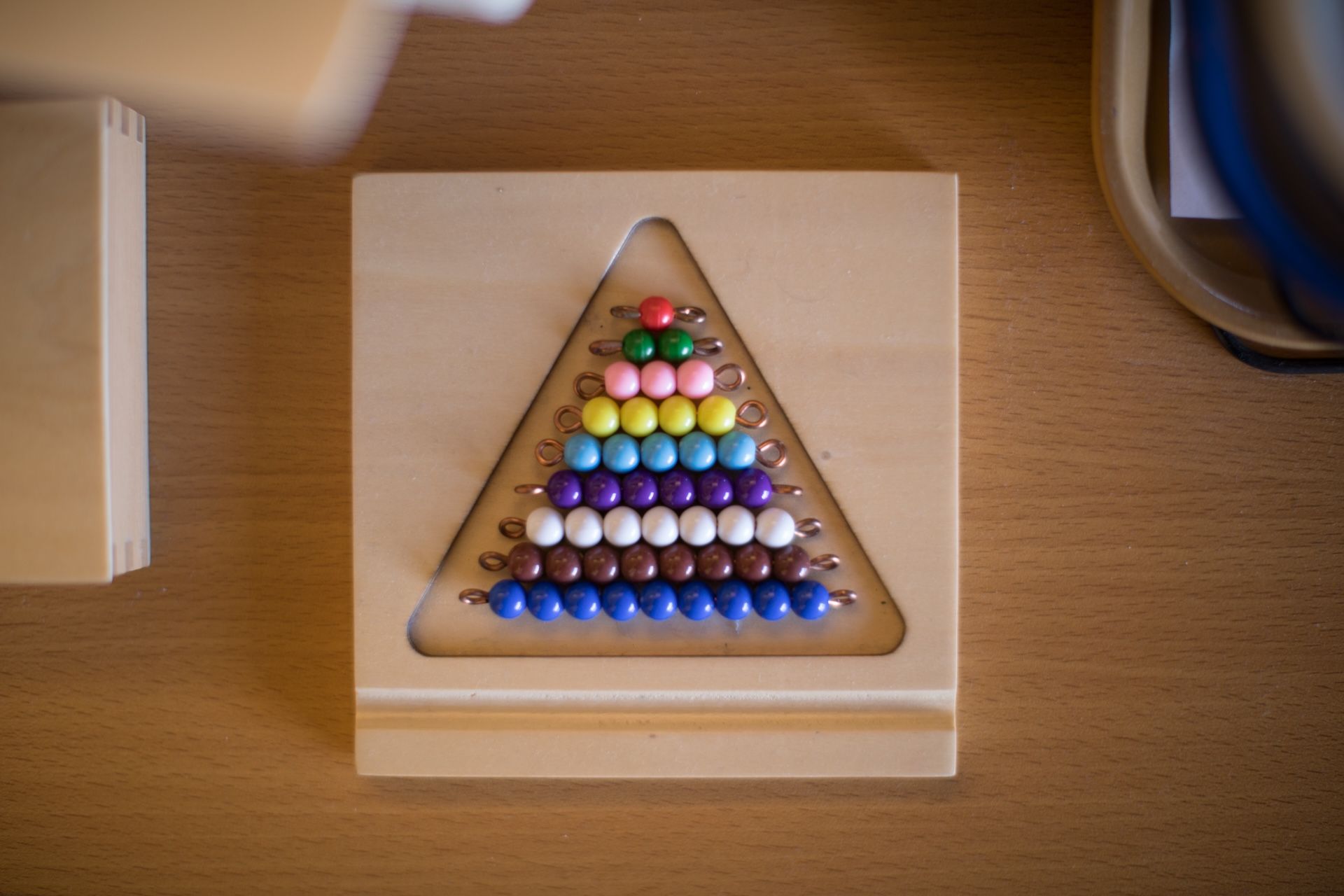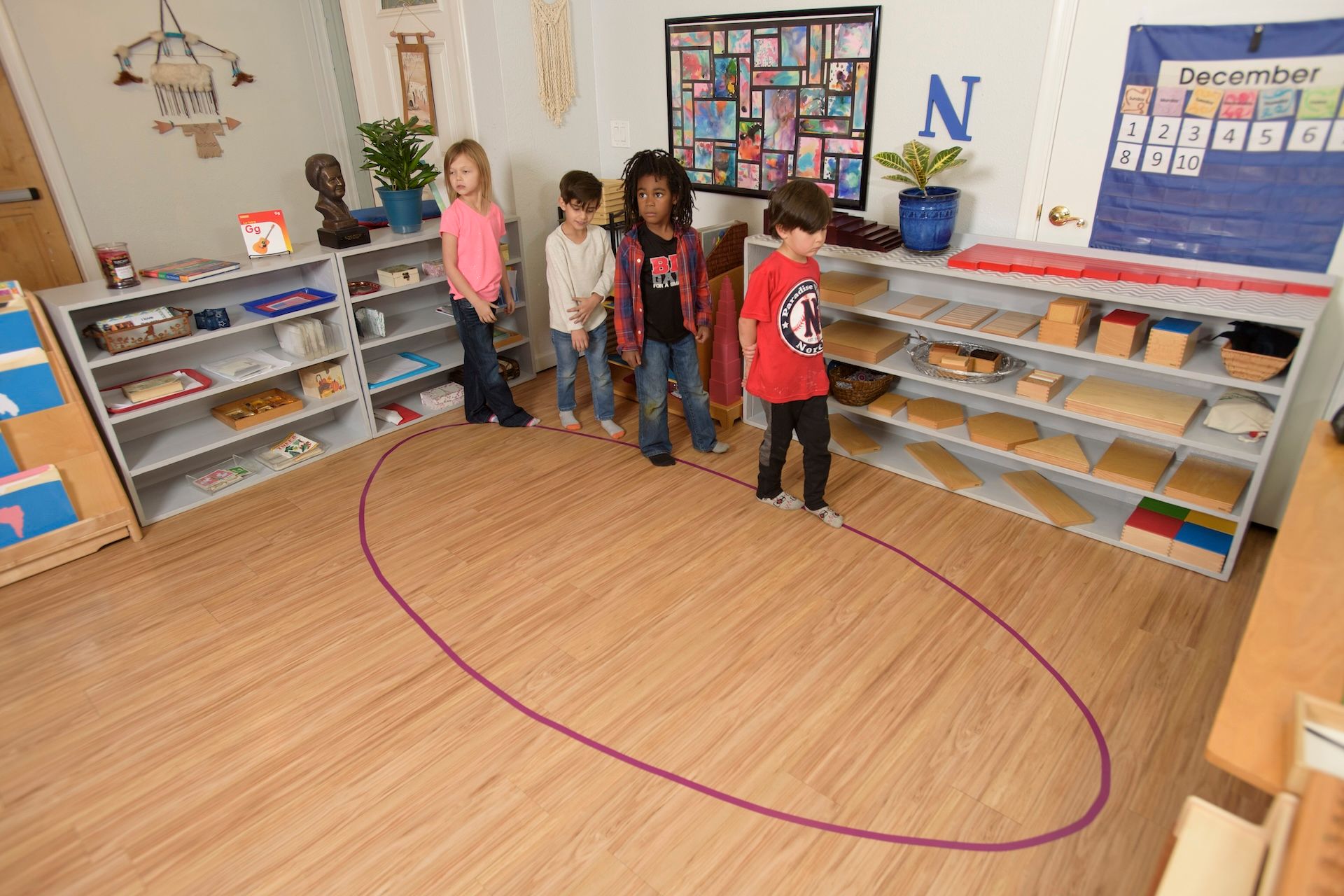
A Montessori approach to toilet learning is very different than the idea that you have to train your child to use the toilet by a certain age. Like other tasks children learn under the Montessori method, we emphasize child-led exploration when teaching toilet use. We think children learn to use a toilet more naturally when adults don’t force them to do things a certain way at a certain time.
1) Watch Your Child
Children typically develop the physical ability to control their bladders and bowels around 12 months old. At this point, it’s a good idea to introduce your children to the toilet and explain its use, but don’t force them to use it.
Several signs can let you know your child is ready to start toilet learning. Children ready to learn typically show an interest in toilet use and want to dress and undress themselves. It’s also a good sign if they’re letting you know when they need a diaper change.
2) Let Them Get Wet
Montessori professionals often recommend using cloth diapers instead of disposable. Disposable diapers are so absorbent a child might not even feel when they wet themselves. In a cloth diaper, they’ll learn to associate the feeling of urinating or having a bowel movement with the sensation of a dirty diaper.
When the child starts using the toilet, you can consider switching to absorbent cloth training pants or regular underwear. It might mean cleaning up more messes. But cloth undies help children learn that being wet feels uncomfortable and they make easier for kids to use the toilet on their own.
3) Provide Easy Toilet Access
Changing your child’s diaper in the bathroom will help them associate that room with what’s going on in their diaper. After they’re 12 months old, you can start setting the child on the potty after a diaper change. Some Montessori writers also recommend changing the child’s diaper while they’re standing to get them more involved in the changing process.
In addition to offering your child opportunities to use a toilet, make it safe and easy for them to use the toilet on their own. Either set up a potty chair in the bathroom or let them use the adult toilet. If you want them to use the regular toilet, make sure it has a secure child-size seat and a sturdy foot stool. You don’t want your child falling off the toilet and hurting themselves or becoming scared of the potty.
4) Make Clean-Up Easy
During toilet learning, the child will wet and soil themselves. While this can be frustrating for you, it’s important to reassure the child instead of making them feel ashamed. You might not even want to call it an ‘accident’. Instead, patiently point out that we need to sit on the potty when we go to the bathroom and help them clean up.
Try to involve your child in cleaning themselves and putting on clean clothes instead of doing everything for them. Keep clothing and underwear, cleaning clothes or wet wipes, and a bucket for soiled clothing within easy reach in the bathroom. Also, be sure you provide clothes the child can easily pull on and off themselves, such as elastic waist pants.
5) Support Your Child
Your biggest role in toilet training is to support your child as they learn how to recognize when they need to use the toilet and take ownership of staying clean. Support your child’s learning process and help them understand that using the toilet is perfectly normal.
We want toilet learning to be a natural process that makes the child feel comfortable. Using the toilet is a skill we can encourage and allow to develop without undue pressure on the child. It requires time and patience on your part, but potty training doesn’t have to be an unpleasant experience for either you or your child.
The post 5 Steps To Montessori Toilet Learning appeared first on Pebblecreek Montessori.
Hours
MONDAY - FRIDAY
HALF DAY: 8:30a – 12 noon
ACADEMIC DAY: 8:30a – 3:30p
EARLY CARE: 7:00a – 8:30a
AFTER CARE: 3:30p – 6:00p
OFFICE: 8:00a - 4:00p
Programs
Connect
Pebblecreek Montessori




